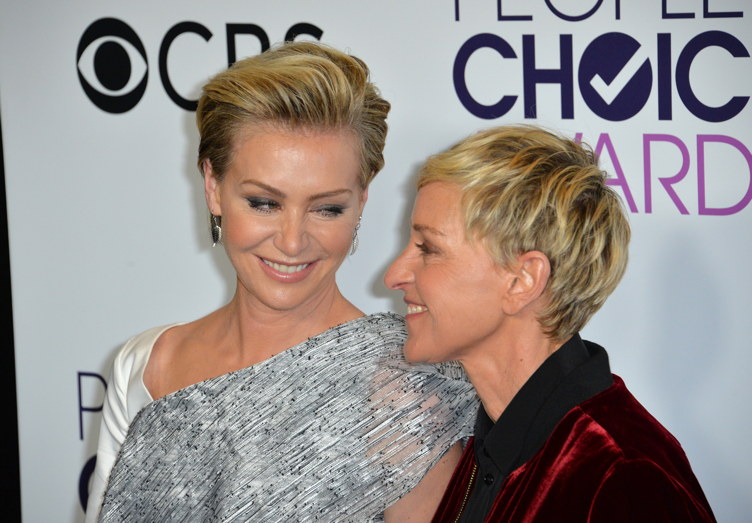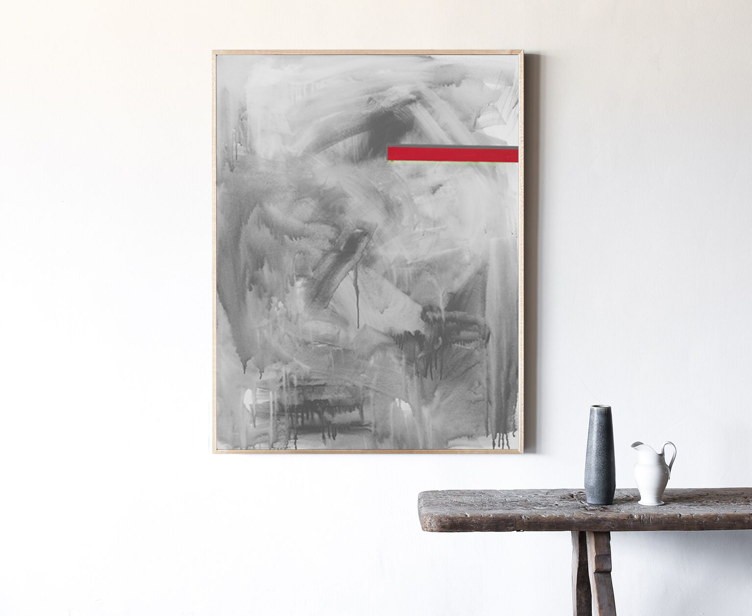Portia de Rossi On Becoming The CEO Of Her Newly Launched Art Company, General Public
Portia de Rossi is making the support of artists her mission. Earlier this month, the award-winning actress and artist formally launched General Public, an art publishing company that curates the best contemporary art made by professional artists from around the globe, with a private preview entitled “Printed Paintings” at Galerie Half in Los Angeles.
General Public, of which de Rossi is the founder and CEO, has developed groundbreaking 3-D technology in the Synograph, a textured print which reproduces paintings that are almost identical to the original, with all the texture and articulation created by the artist. The Synograph—like a photograph—allows the artist to create multiple reproductions, thereby making them available to the general public.
Until now, technology has not enabled painters to recreate paintings with all the dimension and texture of the original. General Public set out to discover the existing pieces of technology, and work with tech companies to develop new technology to make a textured print. It will allow art aficionados and enthusiasts to enjoy the work just as the artist painted it and intended it to be enjoyed, a prospect far more valuable than its poster-version counterpart.
“Our motto is, ‘Support Artists, not Art’” says de Rossi. “As an artist myself, I have watched every other creative medium use technology to cut out the middle man, democratize art and empower the artist. And yet, a painter’s career is still controlled by the Gallery. With General Public, we not only allow painters the ability to maximize their profitability as an artist, but we are able to better provide the people who appreciate these artists the opportunity to own and enjoy their works, not just the wealthy few.”
The company’s roster of collaborators are hand-selected by de Rossi and her team, along with a small group of renowned art advisors and tenured painters who offer an expert understanding of an artist’s technical proficiency. Keeping its goal in mind, each artist will receive a royalty from every Synograph sold. Reproductions, as dictated by the artist, are offered as open or limited editions. Prices of a framed Synograph range from $500 – $3000.
For their inaugural opening, General Public launched with a preview of Printed Paintings featuring reproductions by artists Seb Sweatman, Molly Snee, Kali Sanders and Sarah Bird at Galerie Half in Los Angeles. These works will be available for purchase through General Public Art. The company has also curated an extensive collection for RH with works by artists Paul Van Rij and Koen Lybaert, which will be available at RH and RH.com May 11.
We sat down with de Rossi to discuss her passion for art, the price of becoming a CEO and what pieces are nearest and dearest to she and partner Ellen DeGeneres.
What was your initial motivation, the specific need, for creating General Public?
I created General Public because I wanted to bridge the gap between the decorative and the fine art market. Although many folks have an appreciation of art and would like to own good works by good artists, not everyone wants to learn about the art market or they find collecting—and the galleries—intimating. We developed a print, called a Synograph, that is an almost identical reproduction of the original painting-complete with texture. The Synograph provides folks with an alternative to collecting paintings and the flat poster-like print. This proprietary technology and our professional curation is how we bridge the gap.
Where did the name come from?
I just like the sound of it. And I like that it suggests that the world, the General Public, should have access to and be included in the “art world.” I like the idea of breaking down the barriers.
As an artist, can you speak to the times you’ve been taken advantage of (re: why you decided to found something that cuts out the middle man)?
I’ve seen technology help artists become more independent of agents in every other art form except painting. From novelists to musicians and actors, artists now have the ability to self-publish and/or sell direct. I think the gallery system is antiquated in that a gallery can control an artist’s career. Painting is really the last art form to gain independence and this is largely due to the inability to make accurate reproductions. Our technology has changed that. An artist can make a painting and sell the exact reproduction of that painting as many times as they like unlike the gallery system that thrives on scarcity. But we believe a painting is good because it’s good. Not because it’s rare. In short, I don’t want to cut out the middle man (GP is a kind of middle man) I want to change the system to benefit the artist rather than the gallerist.
Where did your appreciation of art come from and how do you hone it now?
As a kid I studied art and was fascinated by its ability to show humanity in a very different way than any other art form. I love that visual art asks questions and makes suggestions rather than providing any answers. Plus I’m in awe of the technical ability that an artist needs to possess to make a great painting.
How do you curate the collection?
I look for art is made by technically proficient painters that shows understanding of context and the painter’s education. And I need to visualize the paintings in people’s homes. The function of art is to simulate thought, elevate our environment and make us happy. It needs to look good in your home.

Photo Credit: Jaguar PS/Shutterstock.com
What do you hope to bring to the consumer that isn’t already out there?
Everyone has walls and until now the alternative to collecting paintings was buying photographs or black squiggles on white paper. We make accurate reproductions of great paintings, with all the texture and articulation of the original.
What are your favorite pieces in your personal collection?
We have been collecting for many years and have great paintings. But if I had to pick a favorite it would be a 1960 Joan Mitchell.
Do you have one piece that’s especially special to you and Ellen? What, if so, and why?
We love Sarah Bird and have Forest Still Life in our living room. The Synograph—not the original.
















